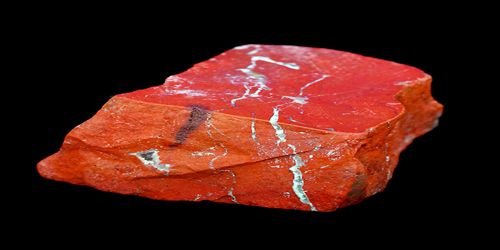Criminal Judicial system Under Hindu Period:
The subject of Legal History comprises the growth, evolution and development Of the legal system of a country; it sets forth the historical process where by a legal system has come to be what it is over.
Hindu Period: these period extents for nearly 1500 years before and after the beginning of the Christian era. The ancient India was divided into several independent states and the King was the supreme authority of each state. As far as the administration of justice is concerned the King was considered the fountain of justice. He was entrusted with the supreme authority of the administration of justice in his kingdom. The essential features of judicial system of this period were as follows:
A. Organization of Court Structure:
Following courts were exist during the ancient Hindu period:
The King’s Court:
The Kings court was the highest court of appeal in the state. It was also a court of original jurisdiction for cases of vital importance to the state. In Kings Court the King was advised by learned Brahmins, The Chief Justice and other judges, ministers, elders and representatives of the trading community.
The Chief Justice’s Court:
The Chief Justices Court which consisted of the Chief Justice and a board of judges to assist the Chief Justice. All the judges in the board belonged to three upper castes preferable Brahmins.
Special Tribunal:
Sometimes separate tribunals with specified territorial jurisdiction used to be formed from among judges who were members of the board of the Chief Justice’s court.
D. Town or District Court:
In towns and districts courts were run by the government officials to administer justice under the authority of the king.
E. Village Council:
The local village councils or Kulani was constituted at village level .This councils consisted of a board of five or more members for administration of justice to villagers. The councils dealt with civil and criminal matters.
B. Judicial Procedure:
A. Stages of a Suit:-
A suit or trial consisted of four stages the plaint, the reply and investigation and finally the verdict or decision of the court.
B. Bench of more than one Judges:-
The courts were functioning on the principle that justice should not be administered by a single judge. Generally a bench of two or more judges would administer justice. Even the King decided cases in his council.
Appointment of Judges and Judicial Standard:-
In the appointment of the Chief Justice and other judges the question of caste consideration played vital role. The Chief Justice was mandatory appointed from Brahmins. A sudra was forbidden to be appointed as a judge. Appointments were made from among the persons who were highly qualified and learned in law. Women were not allowed to hold the office of a judge. Judges were required to take the office of a judge. Judges were required to take the oath of impartiality when deciding disputes between citizens.
D. Doctrine of Precedent:–
The decisions of the King’s court were binding on all lower courts. The principles of law declared by higher courts were taken into consideration by the lower courts while deciding cases.
Evidence:
During the course of proceeding both the parties were required to prove their case by producing evidence. Ordinarily, evidence was based on any or all the three sources, namely, documents, witnesses, and the possession of incriminating objects. In criminal cases, sometimes circumstantial evidence was sufficient to punish the criminal or acquit him.
C. Trial by Ordeal:
Ordeal which was a kind of custom based on religion and faith in God was a means of proof to determine the guilt of the person. The application of trial by ordeal was limited only to the cases where any concrete evidence on either side was not available. This system ordeal was very painful and dangerous to the accused, and sometimes the person giving ordeal died during the ordeal. Some common ordeals are described below:
Ordeal by Fire: According to the Hindu myth fire is considered to be God and it has purifying qualities. According to the ordeal of fire, the accused was directed to walk through or stand or sit in fire for some specified time. If the accused comes out from the fire without any harm, he was considered to innocent.
Sometime the accused was asked to carry a red hot iron ball in his hand and walk a few paces. If he had no signs of burns after the ordeal, he was considered to be innocent.
Ordeal by water: Water seen as a sign of purity under the Hindu mythology was used to test the guilt of the accused. The accused was required to stand in waist- deep water and then to sit down in the water, as an archer shot to an arrow. If the accused remained in the water during the time limit, he was held to be innocent,. Alternatively the accused was required to drink water used in bathing the idol. If he had no harmful effects within next fourteen days, he was declared to be innocent.
C. Ordeal by Poison:-
This method was also based on the view that God protects innocent people. The accused was required to drink poison without vomiting it. If he survived, he was declared to be innocent.
D. Ordeal by Rice- grains:-
The accused was required to chew un- husked rice and then asked to spit out. If blood appeared in his mouth, he was considered to be guilty, otherwise not.
E. Ordeal by Lot:-
Two lots of the same type representing Right (Dharma) and Wrong (Adharma) were placed in a jar. The accused was asked to draw a lot, if the accused drew Dharma he was declared innocent.
D. Trial by Jury:
The jury system existed in ancient India but not in the same from as understood in today’s world. There is evidence that the community members used to assist the administration of justice. They were merely examiners of the case of conflict and placed true facts before the judge though the verdict was declared by the presiding judge and by the jury.
E. crimes and punishments:
The philosophy of crime and punishment was based on the idea that the punishment removed impurities from the accused person and his character is reformed. Before punishment was to be awarded the judge had to consider the motive and nature of the offence, time and place, strength, age, conduct, learning and monetary position of the offender.
There were four methods of punishment- by gentle admonition, by severe reproof, by fine and by corporal punishment. These punishments could be inflicted separately or together depending upon the nature of the offence.
Judges always considered the relevant circumstances before deciding actual punishment. The severity of punishment depended on caste as well.
Certain classes of persons were exempted from punishment:-
- Old people over eighty
- Boys below sixteen
- Women and persons suffering from diseases were to be given half of the normal punishment.
- A child below five was considered to be immune from committing any crime and therefore was not liable to be punished.
- In adultery and rape, punishment was awarded on the basis of the caste consideration of the offender and of the woman.
- In abuse or contempt case every care was taken to see that each higher caste got due respect from persons of lower caste.
For example:- If a person of a lower caste set with a person of higher cast, the man of the lower caste was to be branded on the breech. For committing murder the murder was to pay 1000 cows for killing a Kshatriya, 100 for a Vaisyo and 10 for a Sudra. These cows were given to the King to be delivered to the relatives of the murdered person. A bull was given to the King as a fine for murder.
If a Brahmin was killed a person of lower caste, the murderer would be put to death and his property confiscated.
If a Brahmin was killed by another Brahmin he was to be branded and banished. If a Brahmin killed a person from lower caste, he was to compound for the harem of the King, adding the King’s enemy, creating revolt in the army, murdering ones father or mother or committing serious arson, capital punishment was given in varied forms, namely, roasting alive, drowning, trampling by elephants, devouring by dogs, cutting into pieces, impalement etc.
The above discussion on crime and punishment gives a necessary idea that infliction of punishment was not based on any broad principle rather on whim and caste consideration which was completely devoid of humanity and ethics.
















